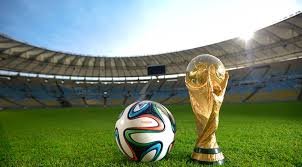Explore how the United States is preparing to host the 2026 World Cup — from stadiums and infrastructure to grassroots development and fan engagement.
How USA Is Preparing to Host the 2026 World Cup
As the clock ticks down toward the 2026 FIFA World Cup, all eyes are on the United States and its co-hosts, Canada and Mexico. With the world’s biggest football spectacle expanding to 48 teams and covering more territory than ever before, the USA is stepping into a historic role — not just as a host, but as a MB8 football ambassador. From state-of-the-art stadium upgrades to grassroots development and fan experience innovation, here’s how the United States is getting ready to deliver one of the most ambitious World Cups in history.
1. World-Class Stadiums and Infrastructure
One of the most significant pillars of the USA’s preparation is the development and refurbishment of elite stadiums. FIFA has selected 11 cities in the U.S. to host matches: Atlanta, Boston, Dallas, Houston, Kansas City, Los Angeles, Miami, New York/New Jersey, Philadelphia, San Francisco Bay Area, and Seattle.
Key Stadium Highlights:
-
SoFi Stadium (Los Angeles): A modern marvel known for its immersive fan experience.
-
MetLife Stadium (New Jersey): Expected to host the final, this arena can hold over 82,000 fans.
-
Mercedes-Benz Stadium (Atlanta): Famous for its retractable roof and sustainability initiatives.
Each stadium will be retrofitted to meet FIFA standards — particularly for pitch dimensions, locker rooms, and media facilities. This will elevate the USA’s football league-level infrastructure to the standards of the world’s most elite tournaments.
2. Transportation and Fan Access
One of the USA’s key advantages lies in its existing infrastructure. With vast networks of highways, international airports, and public transit systems, fan mobility will be smooth and efficient.
To handle the expected surge of over 5 million international visitors, cities are:
-
Enhancing airport terminals.
-
Improving public transit links to stadiums.
-
Creating fan zones in downtown areas.
These improvements aren’t just short-term fixes — they represent a long-term investment in American cities, further embedding the country’s commitment to the global football league ecosystem.
3. The Rise of Football Culture in the USA
Unlike in 1994 — the last time the U.S. hosted the World Cup — football (soccer) has now firmly rooted itself in the American sporting consciousness. The success of Major League Soccer (MLS), the arrival of global icons like Lionel Messi, and the rise of youth academies have all contributed to a cultural shift.
Key developments:
-
Youth football participation has surpassed baseball in several states.
-
Major clubs are investing in grassroots programs and school partnerships.
-
The U.S. men’s and women’s national teams have both seen improvements in global rankings and reputation.
This growing football culture creates a fertile ground for fan engagement, merchandise sales, and long-term viewership of both domestic and international league competitions.
4. Technological Innovation and Digital Experience
The USA’s tech industry is deeply integrated into its 2026 World Cup strategy. From ticketing to fan engagement apps and augmented reality experiences in stadiums, innovation is at the core.
Some features being developed:
-
Smart ticketing systems using blockchain technology.
-
Fan experience apps that integrate real-time stats, navigation, and social features.
-
AR/VR integration for viewers both in-stadium and at home.
These features will set a new standard for how fans experience not just the World Cup, but all football league matches in the digital age.
5. Collaboration with Canada and Mexico
While the USA will host 60 of the 80 matches, the tournament is a joint effort with Canada and Mexico — making it the first World Cup with three host nations. Coordination between the three countries includes:
-
Unified branding and promotional campaigns.
-
Streamlined visa processes for international visitors.
-
Cross-border transportation solutions for fans traveling between matches.
This collaboration also sets a precedent for global football league partnerships across nations, strengthening regional cooperation.
6. Training Facilities and Base Camps
Hosting the world’s best teams means providing world-class training and accommodations. U.S. cities are investing in:
-
Upgrading university and club training grounds.
-
Partnering with local hotels for secure, team-friendly base camps.
-
Providing language and cultural training for staff.
These investments will likely benefit local teams and leagues well after the tournament ends.
7. Environmental Sustainability
The 2026 World Cup also aims to be one of the most environmentally conscious ever. U.S. host cities are implementing:
-
Carbon offset initiatives.
-
Stadiums with LEED certification and solar energy usage.
-
Public awareness campaigns for recycling and waste management.
This approach aligns with the direction many global leagues are taking, setting an example for sustainability in major sports events.
8. Boosting the Domestic Football League System
The momentum from the World Cup is already feeding into the growth of MLS, USL, and even youth leagues. Sponsorship deals, TV rights, and increased academy investments are all signs of long-term planning.
Post-2026, expect:
-
Expansion of domestic leagues.
-
More U.S. players moving to top European leagues.
-
Improved competitiveness in international tournaments.
This transformation could redefine the USA as not just a host, but a future global football powerhouse.
Conclusion: A Nation Ready to Shine
With its robust infrastructure, rising football culture, and tech-driven mindset, the USA is poised to redefine what it means to host a World Cup. The 2026 tournament won’t just be a showcase of elite international talent — it will be a celebration of the league of nations uniting through the beautiful game.
Join the Global Movement
As fans, now is the perfect time to rally behind the growth of football in the U.S. and around the world. Support your favorite league, back your national team, and be part of the biggest celebration in football history. The road to 2026 has begun — and every league matters.





Leave a Reply